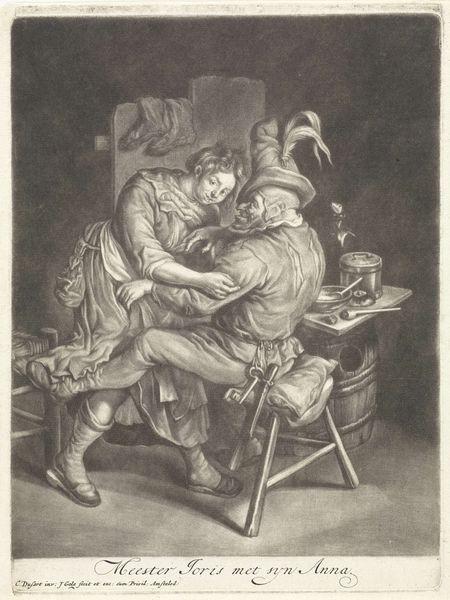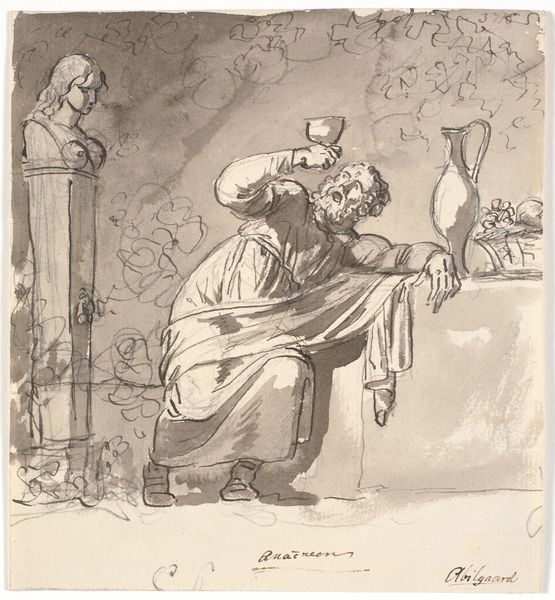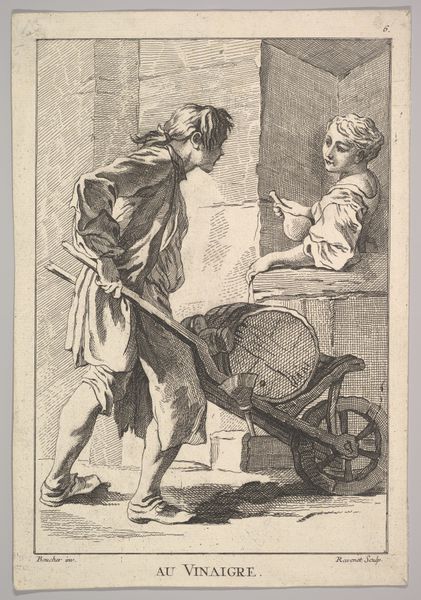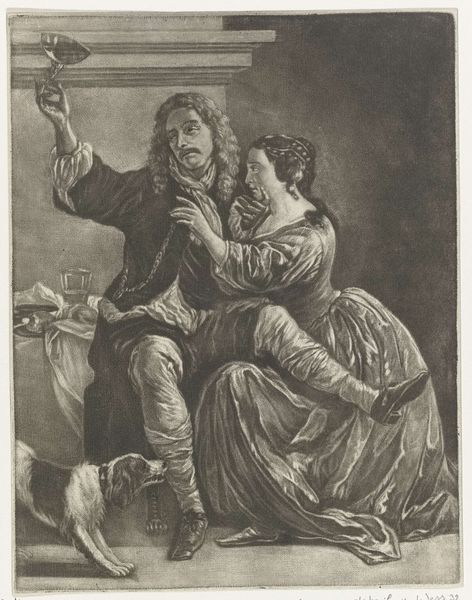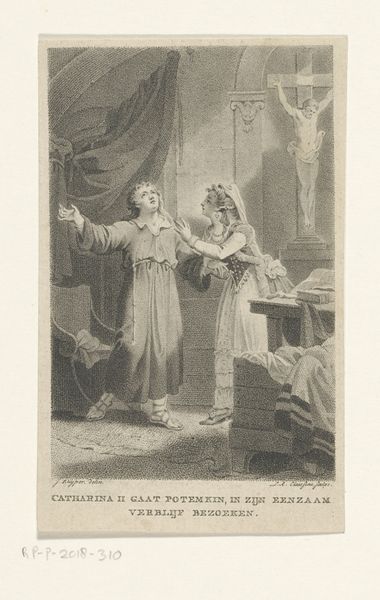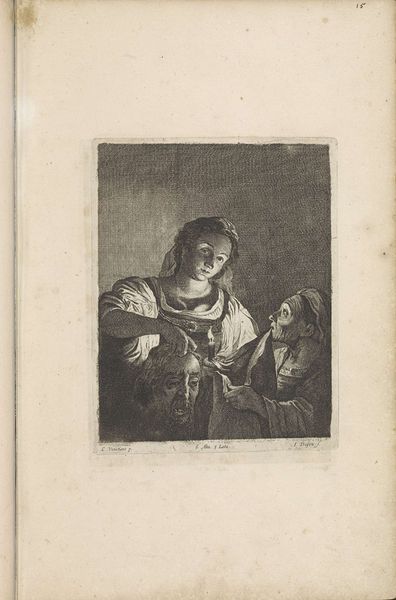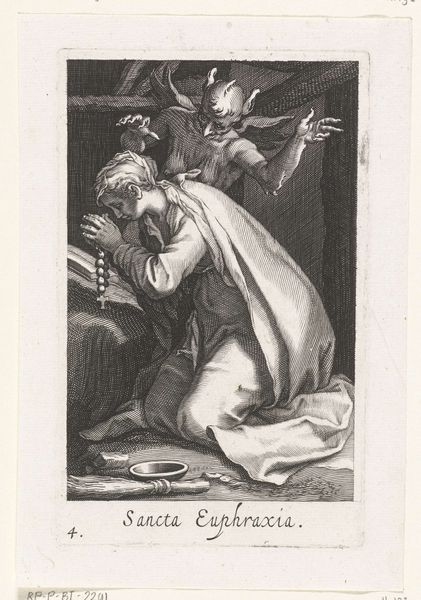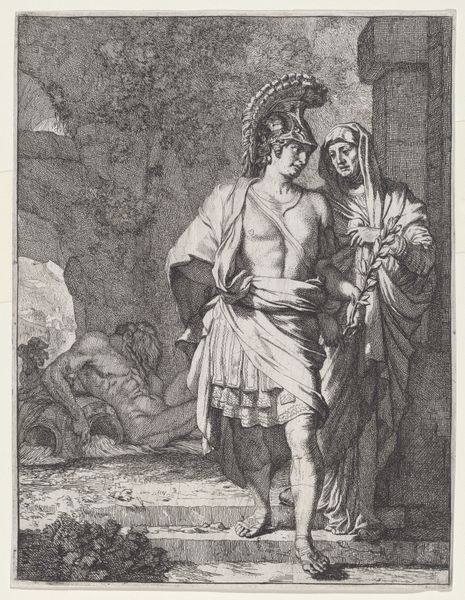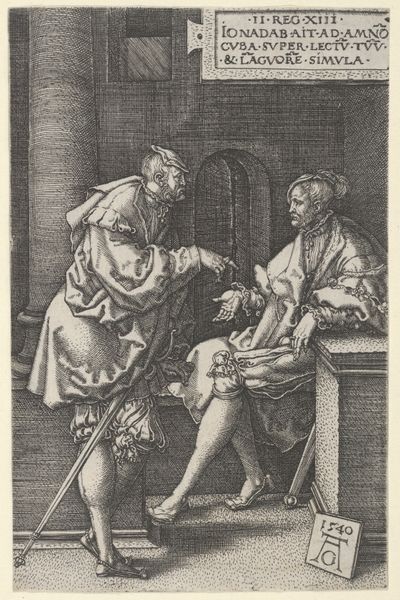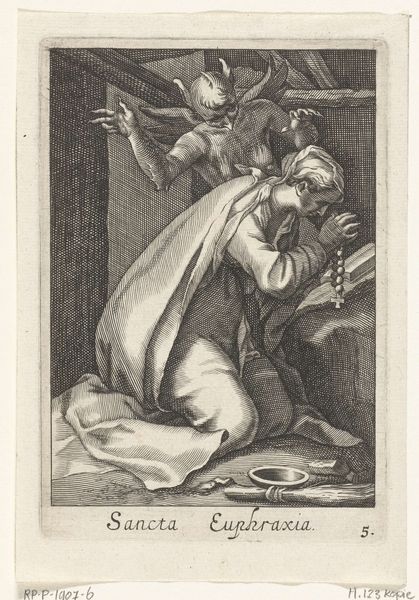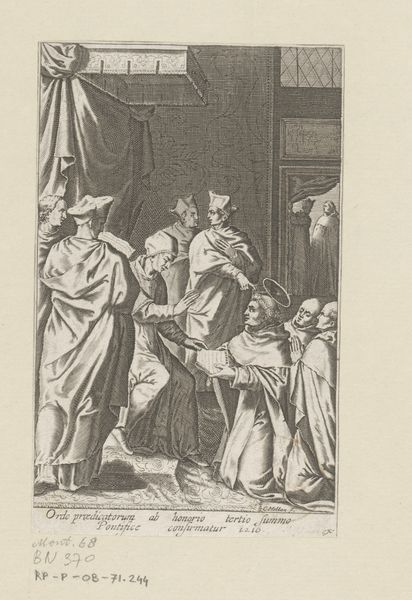
print, etching
#
narrative-art
#
baroque
# print
#
etching
#
figuration
#
genre-painting
Dimensions: height 225 mm, width 173 mm
Copyright: Rijks Museum: Open Domain
Curator: Welcome. Today we'll be discussing "Herberginterieur met vechtende boeren," or "Tavern Interior with Fighting Peasants," a compelling etching dating from 1679 to 1728, created by Johannes Gronsveld after a design by Adriaen Brouwer. Editor: My first impression is of pure chaos. It's an extremely kinetic composition, almost brutally rendered. The way Gronsveld etches the figures—it gives a sense of frantic energy. Curator: Precisely. Consider the stark contrast in the composition. Gronsveld utilizes a strategic arrangement of light and shadow. Observe how the brightest area focuses attention directly onto the face of the peasant being attacked. This creates a focal point. Editor: And consider the means of production, etching, is a relatively democratic process for distributing imagery, so we see how the ready availability of printed materials allows depictions of daily life among common people to circulate. The image itself presents the act of tavern brawling as raw and almost pathetic. How much of this "genre painting" seeks to titillate consumers who'd never participate in such brawls themselves? Curator: It's important to note that Gronsveld and Brouwer lived in a society with very distinct social strata. Works of art are often complex mirrors reflecting social tension. Editor: This etching provides interesting details about everyday life and how laborers seek pleasure in material experiences. The labor it represents might tell a completely different story to those who've never had to partake in such hard physical work, too. Consider what's depicted being consumed here—it comes as no surprise that an unhygienic looking jug is involved... the materials certainly matter, but at what cost? Curator: It could be interpreted through Bakhtin's carnivalesque lens, where such lowbrow activities temporarily upend the existing power structures through joyous irreverence. The figures contort and strain, all their emotions pushed to the very surface in an interesting formal gesture of breaking from convention. Editor: I would argue that this challenges any sense of joy. From my perspective, their visages convey more of desperation than celebration. This reading shifts away from pleasure, back into questions regarding power relations within production practices; and toward those experiences within lower classes, which in turn reflect societal attitudes concerning material limitations during production. Curator: Indeed, a complex piece to unpack. I find its dynamism arresting and appreciate your grounding its interpretation in tangible materiality and context. Editor: And your formal breakdown allowed me see through your insights which provide much deeper insight regarding socioeconomic realities inherent during such image distribution during the seventeenth and eighteenth centuries.
Comments
No comments
Be the first to comment and join the conversation on the ultimate creative platform.
